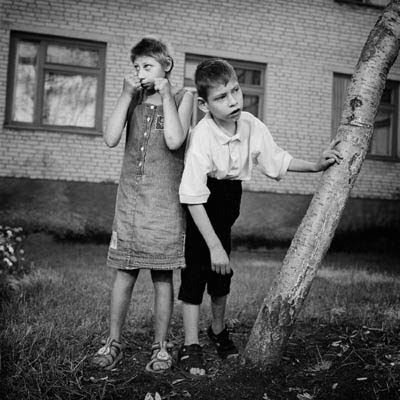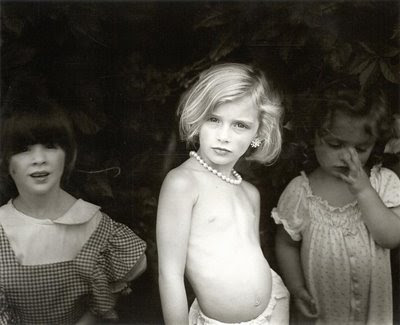 I recently found another article highlighting the photographing of young children labeled "pornography". The girl in this picture was on the cover of an Australian art magazine "Art Monthly." The picture was taken by a Melbourne photographer, whose daughter is the subject. Of course there are the critics:
I recently found another article highlighting the photographing of young children labeled "pornography". The girl in this picture was on the cover of an Australian art magazine "Art Monthly." The picture was taken by a Melbourne photographer, whose daughter is the subject. Of course there are the critics:"Prime Minister Kevin Rudd called it disgusting, infuriating liberal art critics."
" "I can't stand this stuff," said Rudd."
"We're talking about the innocence of little children here. A little child cannot answer for themselves about whether they wish to be depicted in this way," Rudd added.
" The Australian Childhood Foundation said parents had no ethical right to consent to nude photographs being taken of their children, as it could have a psychological impact in later years."
The magazine is publicly funded, and officials are reviewing the funding of the magazine.
One issue I think this picture really brings up is the right of parents to take nude or suggestive pictures of their children and have them published. Part one of my pornography blog chronicled Sally Mann. All of Sally Mann's controversial pictures were of her children. Do the children have the right to say no when the parent is the photographer? Are the parents taking advantage of their kids by publishing theses photos? And if nude pictures were published of a child that were not taken by that child's parents, would that be abuse because the parent is in a sense selling their child out?
If my parents were artists and wanted me to be a subject of their work, I would have loved it when I was younger. Olympia, the girl in the photo, shares my opinion. "I love the photo so much. I think that the picture my mum took of me had nothing to do with being abused, and I think nudity can be a part of art," Olympia Nelson said.


























 Goya also made a series of 80 prints in the 1810s. They were not published until 1896, 35 years after his death because of the gruesomeness of the pictures.
Goya also made a series of 80 prints in the 1810s. They were not published until 1896, 35 years after his death because of the gruesomeness of the pictures.





.jpg)





















